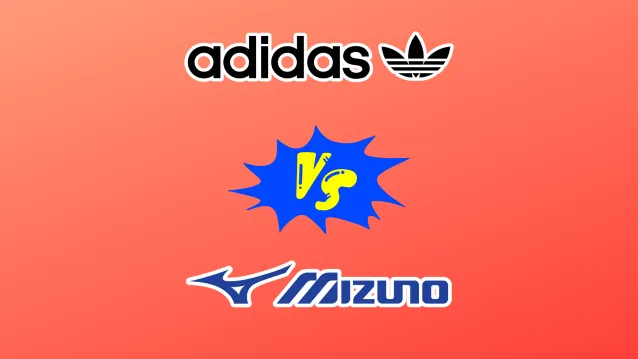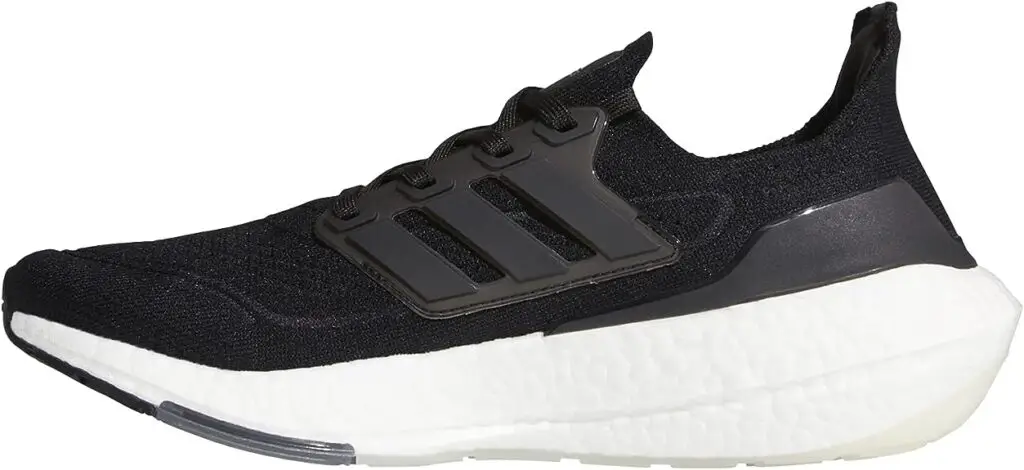As an avid sneakerhead with a passion for performance footwear, I constantly debate between two of my favorite athletic shoe brands – Adidas and Mizuno. Both offer diverse high-quality shoes catering to various sports and fitness activities. In this review, I’ll compare the key differences between Adidas and Mizuno to help you decide which brand best matches your needs and preferences.
Comparison Table
| Category | adidas | mizuno |
|---|---|---|
| Founded In | 1949 in Germany by Adolf Dassler | 1906 in Japan by Rihachi Mizuno |
| Comfort and Fit | Varied widths and sizes, generally comfortable | Tends to run narrow, exceptional comfort for some models |
| Color Options | Wide range of colorways | More limited color options |
| Durability | Durable construction, varies by model | Very durable with premium materials |
| Performance | Excellent for high-intensity activities | Ideal for serious athletes seeking high performance |
| Design and Style | Iconic and stylish designs | Performance-focused aesthetic |
| Popularity | One of the most popular athletic brands globally | Less mainstream appeal than adidas |
| Best Selling Model | Ultraboost running shoe | Wave Rider running shoe |
adidas Overview
Adolf “Adi” Dassler founded Adidas in 1924 in Herzogenaurach, Germany, establishing one of the most recognized and iconic athletic brands worldwide.
Adidas designs performance-driven athletic shoes for running, training, and sports.
Breakthrough innovations like responsive Boost foam midsoles and adaptive Primeknit uppers power popular models like the best-selling UltraBoost.
Adidas maintains a commitment to developing technologies like Formotion and Torsion System that maximize human potential through rigorous athlete testing.
From vintage streetwear classics like the iconic Superstar to new trends like the NMD_R1, Adidas’ sporty style transcends demographics with universal appeal.
With timeless 3-Stripe branding and silhouettes optimized for movement, Adidas continues pushing boundaries while staying true to its roots in athletic performance.
Mizuno Overview
Founded in 1906 in Japan by Rihachi Mizuno, Mizuno is steeped in a long heritage of innovative sports footwear.

While newer to the American running shoe scene than some brands, Mizuno has quietly built a following for its responsive, well-balanced performance.
Mizuno running shoes utilize technologies like Enerzy foam cushioning and Wave Plates engineered into the midsole to provide a springy yet stable platform. The smooth but supportive ride makes Mizuno a great choice for tempo runs and speed workouts.
The breathable mesh uppers hug feet securely but allow adequate airflow on hot runs.
Mizuno shoes run slightly narrow but are tailored to most foot shapes with a curved anatomical last. Sizes accommodate regular and wider width options.
The outsoles use durable carbon rubber in high-wear areas for impressive longevity over hundreds of miles. Traction lugs grip well on varied terrain from tracks to light trails.
While the shoes skew minimalist rather than heavily cushioned, the responsive foam and smooth transitions still offer plenty of comfort for long distances. Testers note the quality of craftsmanship and attention to detail shine through.
For runners seeking a well-balanced shoe for mid to high-mileage training, Mizuno delivers a harmonious blend of comfort, responsiveness, and versatility at a reasonable price point.
Major Differences Between Adidas and Mizuno
Comfort and Fit
When it comes to comfort and fit, adidas and mizuno take slightly different approaches. adidas offers shoes in multiple widths, ensuring most people can find a good fit. Their Boost cushioning and knit textile uppers provide exceptional comfort that adapts to your foot.
However, some adidas performance shoes fit narrowly, so be sure to try them on. Mizuno is meticulously crafted but runs narrow in many models. Their proprietary Wave technology offers great shock absorption though. Trying on shoes from both brands is ideal to find the best match for your foot shape and comfort preferences.
Durability and Performance
Both adidas and mizuno build athletic shoes to withstand intense training and competition. Premium leathers, synthetics, and textiles lend durability to uppers, while high-abrasion rubber outsoles resist damage.
Mizuno’s hand-crafted construction results in exceptional longevity – users report getting several hundred miles out of top Mizuno running shoes before replacement. adidas incorporates tech like thermoplastic polyurethane in the boost midsole which maintains cushioning capacity longer than traditional EVA foam.
For pure performance, mizuno’s innovations like Wave plate cushioning give a competitive edge for serious athletes who train at high intensities. adidas offers a balance of performance and lifestyle appeal. Ultimately both brands excel at durability, but Mizuno takes the lead for uncompromising performance quality.
Price
As premium athletic shoe brands, both adidas and Mizuno come at a cost. However, Mizuno generally has higher prices – their shoes often range from $150 to $250. adidas still produces quality shoes but has more affordable models in the $70 to $120 range.
This makes adidas accessible to more budget-conscious recreational athletes. Both brands frequently put popular models on sale too. For those willing to pay for outstanding performance and longevity, Mizuno delivers. But adidas offers greater affordability and diversity at lower price points overall.
Design and Style
adidas has an edge when it comes to shoe design and style variety. The brand seems to release new colorways and collabs every week, leveraging partnerships with celebrities, designers, and culture icons for inspiration.
Mizuno focuses more on functional performance engineering rather than fashion and aesthetics. Their shoes use quality materials but come in more understated colors. adidas has heritage models like the Superstar along with modern hits like the Ultraboost that capture the athletic zeitgeist.
Individuals wanting shoes to wear both in and out of the gym will appreciate adidas’ style, while dedicated athletes may gravitate to Mizuno’s practical designs.
Popularity
As one of the largest sportswear companies in the world, adidas has substantially greater global popularity and brand awareness than Mizuno. adidas spends heavily on marketing and endorsement deals with superstar athletes like James Harden and Candace Parker along with cultural influencers like Beyoncé and Kanye West.
Mizuno keeps a lower profile, targeting committed athletes in running, volleyball, baseball, and select other sports. Unless you follow competitive athletics closely, you’re more likely to have heard of adidas. However, Mizuno enjoys an excellent reputation among serious runners and players who value performance over hype.
Target Market
adidas makes shoes for all-around athletes and sports lifestyle consumers across demographics. Mizuno primarily targets devoted athletes who compete and train hard in specific disciplines like running, volleyball, and baseball.
Recreational runners may appreciate adidas for stylish shoes that provide both comfort and streetwear versatility. Competitive marathoners would likely choose Mizuno for no-compromise cushioning, stability, and durability on long runs. adidas has broader appeal for casual use, while Mizuno focuses on fulfilling needs of performance athletes in select sports.
Performance Comparison Between Adidas and Mizuno
For Nurses
Nurses need comfortable athletic shoes that provide excellent cushioning for long shifts spent on their feet. Both adidas and Mizuno make shoes that fit the bill, but adidas has more variety geared towards casual workplace attire.
The adidas Ultraboost and NMD lines offer supple boost cushioning and knit uppers with a stylish silhouette. Mizuno running shoes like the Wave Rider also have great cushioning but trail adidas in on-the-job looks. For nurses, adidas delivers better versatility from work to workout.
For Walking
Walking shoes must combine cushioning, flexibility, and lightweight breathability. adidas excels at these criteria with options like the Ultraboost 21 or Supernova models. The boost cushioning platform provides a responsive feel during miles-long walks.
Mizuno walking shoes employ Wave plate and Enerzy foam to absorb shock, but may feel overly engineered if you just want casual strolling comfort. For all-day walking comfort across varied terrain, adidas has the edge.
For Running
As performance running brands, both adidas and Mizuno make excellent shoes for logging miles. But Mizuno’s technology and pedigree give them an advantage in hardcore running scenarios. Their Wave plate design masterfully attenuates shock and impact while providing a responsive toe-off.
Shoes like the Wave Rider, Inspire, and Sky deliver unmatched support mile after mile for neutral, overpronating, and stability-needing runners respectively. adidas performs well also with cushy boost foam, but their shoes cater more towards casual runners and gymgoers compared to Mizuno’s competitive edge.
For Flat Feet
Runners with flat feet need well-cushioned shoes that provide stability and arch support. For this need, Mizuno rates as the top choice. Even neutral Mizuno shoes have moderate stability features, while models like the Wave Inspire utilize a Wave plate and U4ic foam to prevent overpronation and keep feet aligned.
adidas shoes like the Ultraboost contain ample cushioning but lack pronation control for flat feet. Go with Mizuno if you require specialized support due to flat feet.
For Back Pain
Proper footwear can help alleviate discomfort from back pain stemming from poor posture, joint stress, or previous injuries. Here adidas pulls ahead as the better brand for back pain.
Their Ultraboost line incorporates a foot-wrapping knit upper and extremely cushioned midsole to absorb pressure that might otherwise transfer to the back. Mizuno is also cushioned but fits more tightly in the forefoot which may aggravate back issues for some. For back pain relief, adidas takes the lead.
For Standing All Day
People on their feet all day need athleisure shoes blending style, comfort, and support. Once again adidas wins out with their casual designs containing bouncey boost foam. The NMD and Ultraboost lines work great for extended standing or walking required by jobs in service, retail, healthcare or other fields.
Mizuno specializes in high performance rather than all-day wear. While their shoes have cushioning, the fit and style make them less suitable for non-athletic standing compared to adidas’ casual and workplace-friendly options.
For High Arches
High arched runners require ample cushioning along with a curved sole profile to match their foot shape. While both brands make well-cushioned shoes, Mizuno better accommodates high arches.
Many of their shoes combine a curved shape with the Wave plate’s rigid structure to effectively disperse pressure and keep feet aligned. adidas shoes provide plush cushioning but their flat, straight soles lack support specific for high insteps. Go Mizuno if you need shoes tailored for high-arch support.
For Hiking
Rugged hiking shoes need grip, protection, stability and durability to handle unpredictable terrain and heavy loads. For this application, adidas hiking models like the Terrex line rate as the better choice. Their Continental rubber outsoles and abrasion-resistant uppers hold up well to rugged use.
Mizuno trail runners cushion well but lack the structure of adidas hiking shoes to handle extended trips with a heavy pack. adidas’ Outdoor division focuses squarely on hiking performance.
For Plantar Fasciitis
The inflammation caused by plantar fasciitis requires proper footwear to aid recovery. While both brands offer selections to help, adidas edges out Mizuno for plantar fasciitis relief. The Ultraboost contains a molded footbed and soft boost midsole to gently stretch the plantar fascia and reduce tension.
Mizuno is still cushioned but fits snugger over the forefoot which could irritate the inflamed tissue. For reducing plantar fasciitis discomfort, adidas is the top choice.
Final Verdict
In closing, while both adidas and Mizuno make excellent athletic shoes, they each shine in different scenarios. adidas excels at combining performance with street-ready style that travels seamlessly from workout to everyday wear. Technologies like boost cushioning and knit uppers deliver responsive comfort across their diverse catalog.
However, Mizuno surpasses adidas in no-compromise functionality for hardcore athletes in sports like running, volleyball, and baseball. Their meticulous Japanese craftsmanship optimizes stability, shock attenuation, and energy return to give a competitive edge.
Ultimately, casual gymgoers and all-around athletes would thrive in adidas shoes tailored for active lifestyle needs. But serious competitors who train relentlessly should choose Mizuno for their uncompromising focus on biomechanical excellence in sport-specific contexts.
Both reputable brands make outstanding footwear, so deciding between adidas and Mizuno comes down to your priorities – lifestyle versatility versus uncompromising performance. Hopefully this in-depth comparison provides helpful insights to decide which brand best fits your training and wearing preferences.



